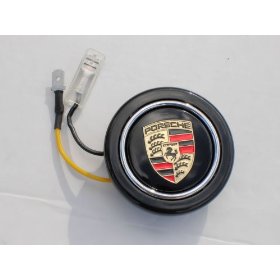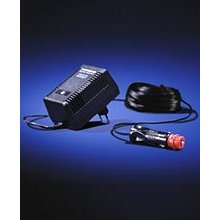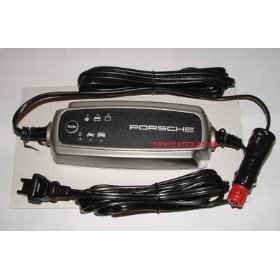 |

1956 Porsche 356
|
More 1956 Porsche 356's
For Sale,
Parts,
Repairs,
How To Fix,
Manuals,
Online Store,
Videos,
Images,
Restorations,
Shows,
Events,
Auctions,
Classifieds,
Clubs,
News,
Blogs,
Forums,
Magazines,
Die Cast Models
|
|
| Address: Scotts Valley, CA | |
Mileage: 680 | |
| Exterior Color: Black | |
Interior Color: Black | |
| Transmission: Manual | |
|
Contact Me...
|
|
|
1956 Porsche 356 A Speedster Outlaw VIN: 82225 Engine No: 61435 Transmission No: 29034 Complete mechanical and cosmetic restoration 152 horsepower, 1925cc twin plug engine with EFI Custom Willhoit suspension Many real GT parts Fitted luggage Show winner What began as the simple mechanical sorting of a driver level Speedster by its new owner, turned into an almost two-year restoration and upgrade by acclaimed 356 guru John Willhoit, of Willhoit Restorations in Long Beach, CA. After the car was stripped down to begin its rotisserie restoration the owner made the choice to restore the car as an Outlaw GT. The concept of the car would revolve around its engine. Willhoit had already wanted to build a fuel injected 356, and the owner had a strong distaste for carburation, so the choice was made to build a unique Porsche motor. The engine Willhoit created is 912-based, with a SCAT lightweight 74-mm crankshaft and Carrillo connecting rods. Willhoit sent the case to Ollie's Machine in Santa Ana for all internal work. Custom, 91-mm cylinders made from Mahle VW big-bore cores yielded a displacement of 1925 cc. The special cylinders have more cooling-fin area than the stock Porsche cylinders. The barrels are filled with specially-forged lightweight JE Pistons, cooled by special oil squirters. A compression ratio of 10.8:1 demands something better than the stock cylinder heads and ignition system, so Willhoit found a shop with extensive racing experience that could engineer and craft a set of twin-plug heads to his requirements. Euro cylinder air deflectors improve downward airflow over the cylinders. Web Cam produced a special billet-ground camshaft for the project. Now came the fun part, developing the fuel-injection system. The first step was to create a computer model of a stock 356 engine. Willhoit did virtual EFI engine simulations with various throttle body sizes, and in the end decided to go with Motec. TWM Induction of Goleta, California, provided throttle bodies, fuel rails, and stacks before Willhoit went to work creating a billet twin-ignition distributor containing a pair of Hall sensors. A dual output CDI system from M&W Iginitions of Australia takes signals from the ECU to fire a pair of coils. Needed to power the CDI box, pumps, four relays, and the ECU, the 356 uses a Bosch 52-amp alternator, eliminating the need for a voltage regulator. Willhoit fabricated a special stainless sport exhaust system with a twin-outlet muffler, which was required to clear the lower spark plugs. He then had Sakata Motorsports, a Motec dealer, create a new MIL-spec wiring harness for the fuel-injection system. A late Carrera 3.2 fuel pump provides continuous fuel flow of 60 psi and recirculates excess gas to the fuel tank. A full-flow oiling system with proper filtration takes advantage of a deep and wide aluminum oil sump, and a pair of Setrab oil coolers are up front mounted Carrera-style behind the front horn covers. All hoses in the oil system are Nomex-covered Aeroquip. To finish off the powertrain, the car received a 10.5 pound flywheel, an aluminum pressure plate from Kennedy Engineering, and a heavy-duty clutch disc send power to the 741 transaxle. Assembled in a 716 housing by Scott Hendry in Anaheim, the gearbox uses a set of later C-B-A-A gears with a 7:31 ring and pinion set. In the end the engine made 152 horsepower at 6500 rpm and holds power all the way up to 7000 rpm. It's a very torquey four, as well, with 140 lb-ft on tap at 5200 rpm and 120 lb-ft available at 3500 rpm. But more important than the raw numbers, the engine offers flexibility that's impossible to match with conventional carburetion. You can put the 'pedal to the metal' in top gear at 2000 rpm without any bucking or spitting. After 18 months of effort Willhoit had achieved his goal: A state-of-the-art fuel system in a nearly 50 year-old car. With all of this additional power the Speedster needed more than a few upgrades to deal with the hot-rodded powertrain. To that end, Willhoit installed decambered front spindles, a heavy-duty aluminum tie-rod kit, and custom-valved Bilstein shocks at all four corners. New torsion bars - 20 percent stiffer in front, 25 percent stiffer in the rear - mount in modified tubes. The car's factory 16-mm forward anti-roll bar was borrowed from a later 356C. Finally, the Speedster was lowered by about two inches all around to get an aggressive stance. With the suspension all figured out, the brakes were next on the list. Willhoit scrounged up a set of 60-mm wide, GT-finned front drums and replicated a set of the factory's GT backing plates, which include cooling air scoops at both ends. Alex Blivens at West Coast Haus in Huntington Beach supplied the handsome, brushed-finish two-piece aluminum early-style open hub 15X5.5 wheels. With the mechanicals all in place the chassis was set up to handle additional performance. Willhoit installed a chassis-strengthening kit that they developed. It involves slicing open the longitudinals and installing new, internally boxed 12-gauge sheetmetal reinforcements. Then they cover the work with new longitudinals. The shop also added a set of frame struts - which Porsche did not adopt until 1957 - between the front axle and floorboards. With new floors and other reinforcements installed, the tub is now very rigid when compared to the fairly flexible stock body. With the body structural sound, it was time for a few subtle modifications. GT bumper deco trim was added, while Carrera-style louvers were punched into the engine lid for additional ventilation. The water tray was removed at the same time. The Porsche emblem and the Speedster side trim was deleted from the dashboard. Willhoit's crew spent 700 hours on the metal-work alone. In the interior vented Speedster seats were reupholstered by Autos International in black leather with dark gray corduroy inserts. The carpeting was replaced with a reproduction of the factory's GT lightweight pebble-grain vinyl. The door panels and other interior panels are covered in black leather. The interior door handles are small but functional aluminum GT-style units. The trick three-spoke steering wheel was covered in leather by John Moch. Willhoit found a 160-mph speedometer and an 8000-rpm tach and had both converted to work on 12 volts by North Hollywood Speedometer. The same shop created a new four-in-one gauge to display oil temperature, oil pressure, fuel level, and volts. For driver comfort, Willhoit relocated the gearshift eight inches rearward, displacing the old heater controls, and the shift lever was shortened. A set of custom-made three-point retractable seatbelts help keep occupants firmly planted. The rear seat tray was removed in the GT tradition, and a neat black
|
|
Postcard | Email
Return to the Magazine
|

|






































































